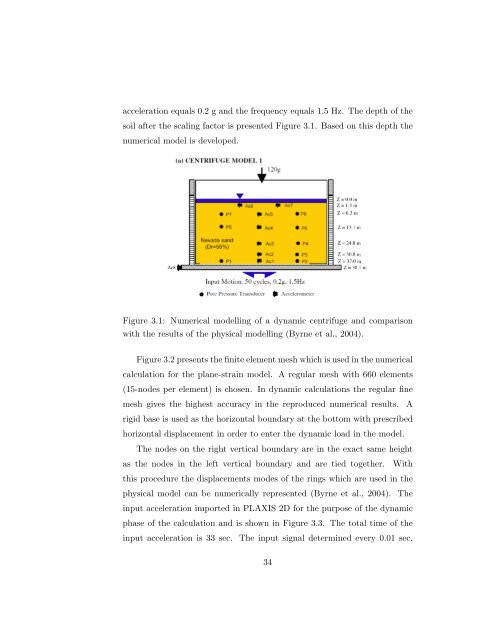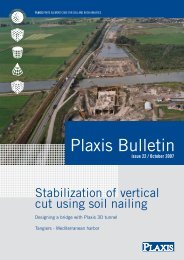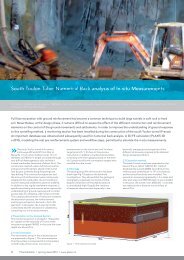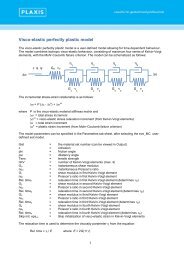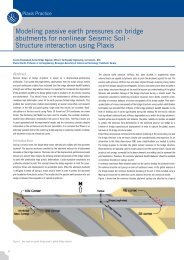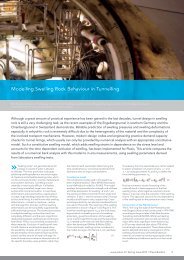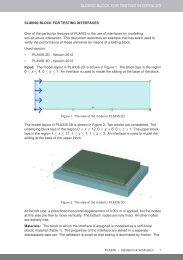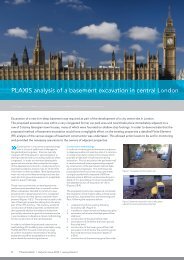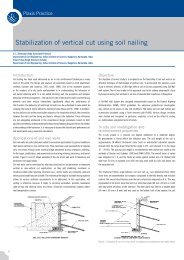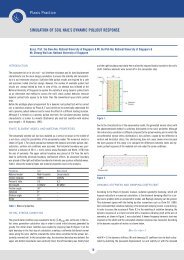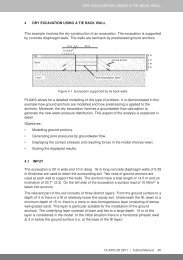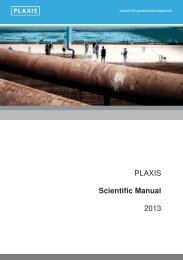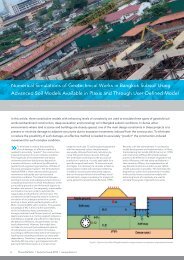PLAXIS LIQUEFACTION MODEL UBC3D-PLM - Knowledge Base
PLAXIS LIQUEFACTION MODEL UBC3D-PLM - Knowledge Base
PLAXIS LIQUEFACTION MODEL UBC3D-PLM - Knowledge Base
- No tags were found...
Create successful ePaper yourself
Turn your PDF publications into a flip-book with our unique Google optimized e-Paper software.
acceleration equals 0.2 g and the frequency equals 1.5 Hz. The depth of thesoil after the scaling factor is presented Figure 3.1. <strong>Base</strong>d on this depth thenumerical model is developed.Figure 3.1: Numerical modelling of a dynamic centrifuge and comparisonwith the results of the physical modelling (Byrne et al., 2004).Figure 3.2 presents the finite element mesh which is used in the numericalcalculation for the plane-strain model. A regular mesh with 660 elements(15-nodes per element) is chosen. In dynamic calculations the regular finemesh gives the highest accuracy in the reproduced numerical results. Arigid base is used as the horizontal boundary at the bottom with prescribedhorizontal displacement in order to enter the dynamic load in the model.The nodes on the right vertical boundary are in the exact same heightas the nodes in the left vertical boundary and are tied together. Withthis procedure the displacements modes of the rings which are used in thephysical model can be numerically represented (Byrne et al., 2004). Theinput acceleration imported in <strong>PLAXIS</strong> 2D for the purpose of the dynamicphase of the calculation and is shown in Figure 3.3. The total time of theinput acceleration is 33 sec. The input signal determined every 0.01 sec.34


